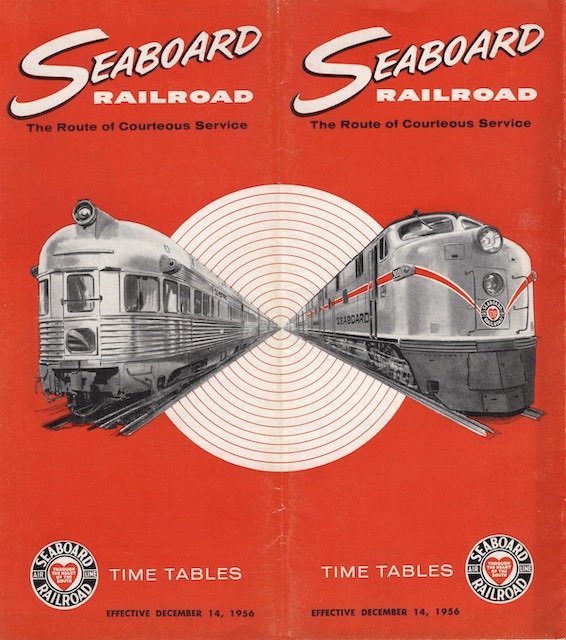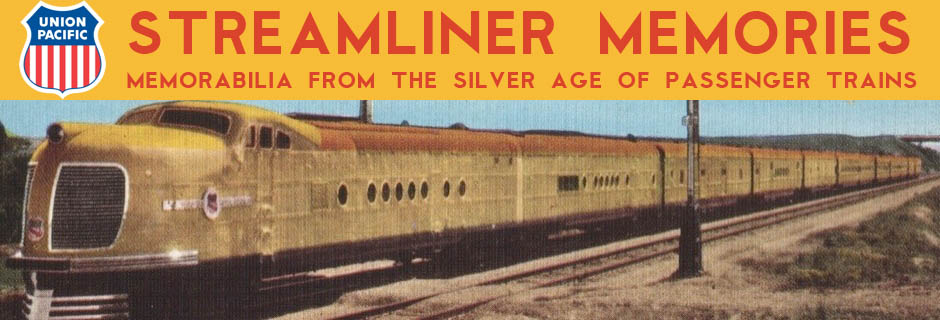Like its rival and eventual merger partner, Atlantic Coast Line, the Seaboard railroad had an impressive array of trains heading south from New York City (via PRR and RF&P) in 1956. At 9:50 am, the Silver Star departed for Florida followed by the less prestigious Sunland at 10:30 am. The Sunland was all-coach leaving New York, but it had a section from Norfolk/Portsmouth with some sleeping cars that joined the main train in Norlina, NC.
 Click image to download a 17.4-MB PDF of this timetable contributed by Ellery Goode.
Click image to download a 17.4-MB PDF of this timetable contributed by Ellery Goode.
At 12:45 pm the Birmingham-bound Silver Comet left New York. This was followed by the Silver Meteor to Florida at 2:55 pm. At 5:30 pm, an unnamed, all-coach train departed for Birmingham. Then the Palmland left for Florida at 8:30 pm. There was also a mail train leaving New York at 3:50 am with coaches and mail for Atlanta.
Just as the winter-only Florida Special and year-round Champion were ACL’s main trains, the winter-only Silver Star and year-round Silver Meteor were SAL’s biggest trains. Each of these trains carried eight sleepers (one of which was partly a lounge car), six 52-seat coaches, two diners to feed the hungry hordes, and a lounge-observation car (which ACL trains didn’t have in 1955). With a baggage car that made for 18 cars, longer than almost any other passenger trains in the 1950s.
All of Seaboard’s Florida trains split south of Jacksonville at a station called Wildwood with a majority of the cars going to Miami and the rest to Tampa/St. Petersburg. Unlike ACL’s route, SAL was able to go straight from Tampa to St. Petersburg and so didn’t need to split up that section. Seaboard had a few other trains including the Gulf Wind from Jacksonville to New Orleans with Louisville & Nashville handling the portion between Chattahoochee and New Orleans.
Seaboard streamlined trains were just as fast as Atlantic Coast Line’s in 1941, but by 1956 the times had slipped a little. Where ACL was running trains from New York to Miami in 24 hours, Seaboard’s fastest took 25-3/4 hours. As I noted a few days ago, ACL was still using some heavyweight equipment and didn’t have observation cars but was running trains at 100 mph (which required sophisticated signaling equipment). Seaboard must have decided to compete on freshness and luxury rather than speed.
